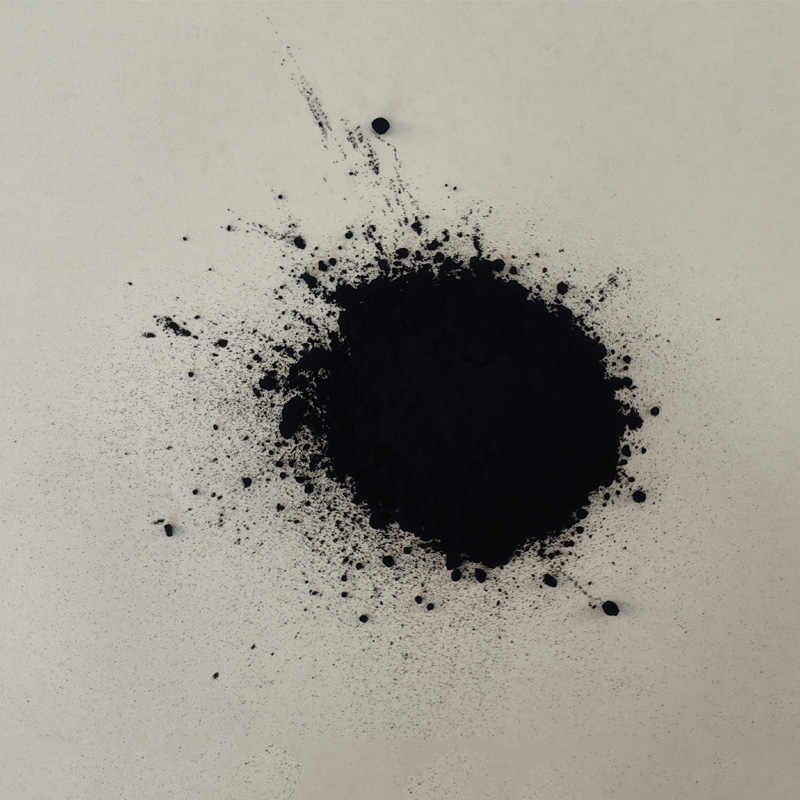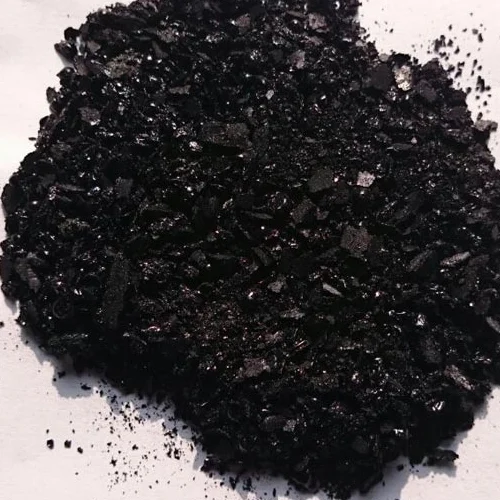Organic indigo leaf powder - a natural hair dye with multiple benefits.
Indigo is derived from the indigo plant, a blue plant that will give a blue/green tint on light coloured - grey or light blonde hair. When used together with henna or after henna it can give brown to black shades on grey hair. If you do not have grey but have red or brown hair you can apply the indigo directly to your hair to darken it.
Organic indigo powder is 100% chemical-free, containing no PPD, no harmful chemicals, or additives of any kind, so unlike many chemical hair dyes, indigo powder is safe to use long-term, and will not damage your hair and scalp.
indigo blue vat blue
Using chemical hair dye can also speed up the greying of hair, whereas indigo powder can treat, prevent, and even reverse premature grey hair, so the benefits of using indigo powder hair dye are significant, and of course we highly recommend it.
Organic indigo powder used together with henna.
When henna powder is used with indigo powder it can give shades from reddish brown, to dark brown, to black. The colour you get depends on the method you use, how long you leave the hair dye on for, and the proportion of henna to indigo you use.
There are 2 ways of doing of using henna and indigo powder to achieve brown or black tones:
Method 1: This method gives the strongest result. First, dye your hair with henna so it goes auburn/red. For best results, wash and dry your hair after dyeing with henna, before the next step. Next, dye your hair with indigo and the auburn/red turns to brown. To achieve the desired shade, you need to leave the indigo on for the right amount of time, as well as using the right proportions of henna and indigo. The longer the indigo is left on for the darker it will be. If you leave it on the maximum time, it can go black.
Method 2: Soak the henna overnight. Mix the indigo powder with water just before you are ready to dye your hair. Thoroughly mix the henna mixture together with the indigo mixture. To get a more red/brown shade use a larger percentage of henna. To get a darker brown use a larger proportion of indigo. This method is quicker than method 1. To get a black shade use method 1.
Everyone's hair is different and will take the colour differently, so some trial and error is necessary to get the desired shade.
How much organic indigo powder do you need to dye your hair?
It depends how long and how thick or fine your hair is. These quantities are for average hair. You should reduce these if you have fine hair or increase them if you have thick hair:
- short / chin length hair - 40 to 50 gms
- shoulder length hair - 80 or 90 gms
- mid back length hair - 150 or 180 gms
- hip length hair - 220 or 250 gms
How long do you need to leave indigo powder on your hair for?
If you are applying indigo after first colouring your hair with henna, you can leave the indigo on for different lengths of time depending on how dark you want the end colour to be. Anything from 10 minutes to 2 hours, or even longer if you want black hair.
Everyone's hair is different, so it is good to experiment to find the best method for your hair.
It is not advisable to lighten your hair with chemical bleach after using indigo powder.
-
The Timeless Art of Denim Indigo Dye
NewsJul.01,2025
-
The Rise of Sulfur Dyed Denim
NewsJul.01,2025
-
The Rich Revival of the Best Indigo Dye
NewsJul.01,2025
-
The Enduring Strength of Sulphur Black
NewsJul.01,2025
-
The Ancient Art of Chinese Indigo Dye
NewsJul.01,2025
-
Industry Power of Indigo
NewsJul.01,2025
-
Black Sulfur is Leading the Next Wave
NewsJul.01,2025

Sulphur Black
1.Name: sulphur black; Sulfur Black; Sulphur Black 1;
2.Structure formula:
3.Molecule formula: C6H4N2O5
4.CAS No.: 1326-82-5
5.HS code: 32041911
6.Product specification:Appearance:black phosphorus flakes; black liquid

Bromo Indigo; Vat Bromo-Indigo; C.I.Vat Blue 5
1.Name: Bromo indigo; Vat bromo-indigo; C.I.Vat blue 5;
2.Structure formula:
3.Molecule formula: C16H6Br4N2O2
4.CAS No.: 2475-31-2
5.HS code: 3204151000 6.Major usage and instruction: Be mainly used to dye cotton fabrics.

Indigo Blue Vat Blue
1.Name: indigo blue,vat blue 1,
2.Structure formula:
3.Molecule formula: C16H10N2O2
4.. CAS No.: 482-89-3
5.Molecule weight: 262.62
6.HS code: 3204151000
7.Major usage and instruction: Be mainly used to dye cotton fabrics.


